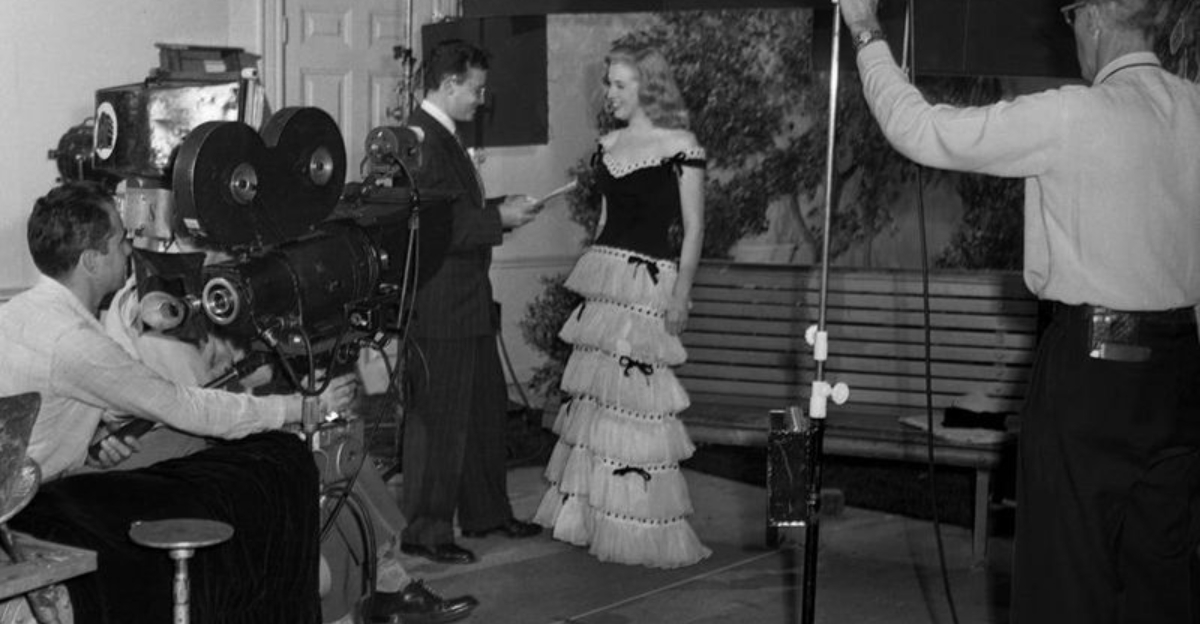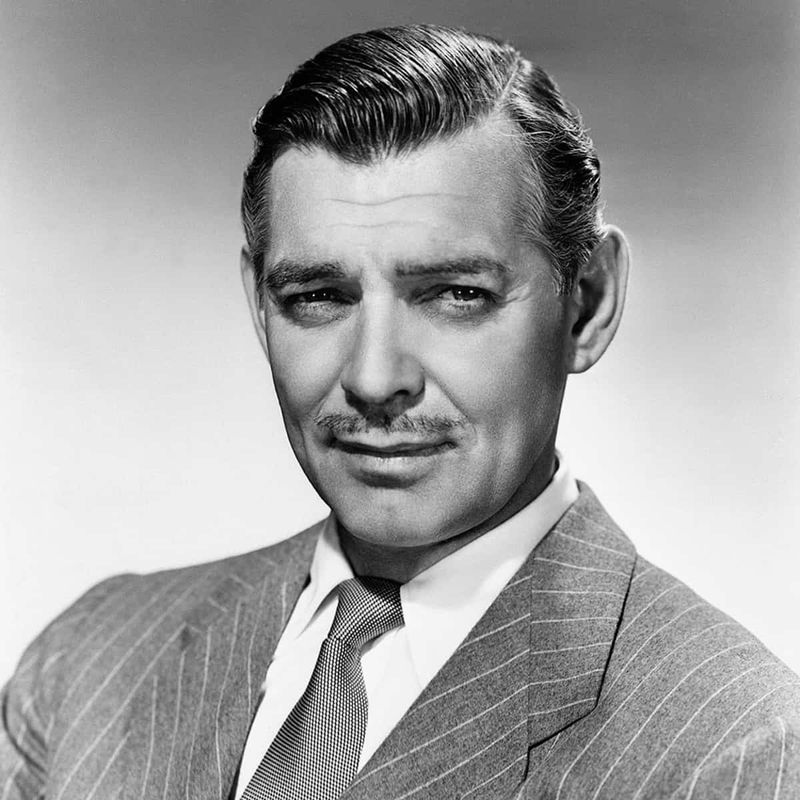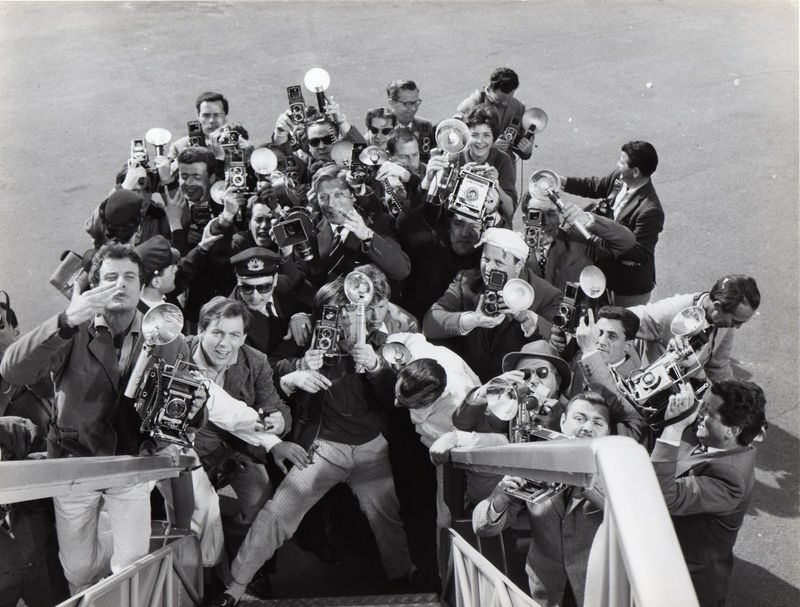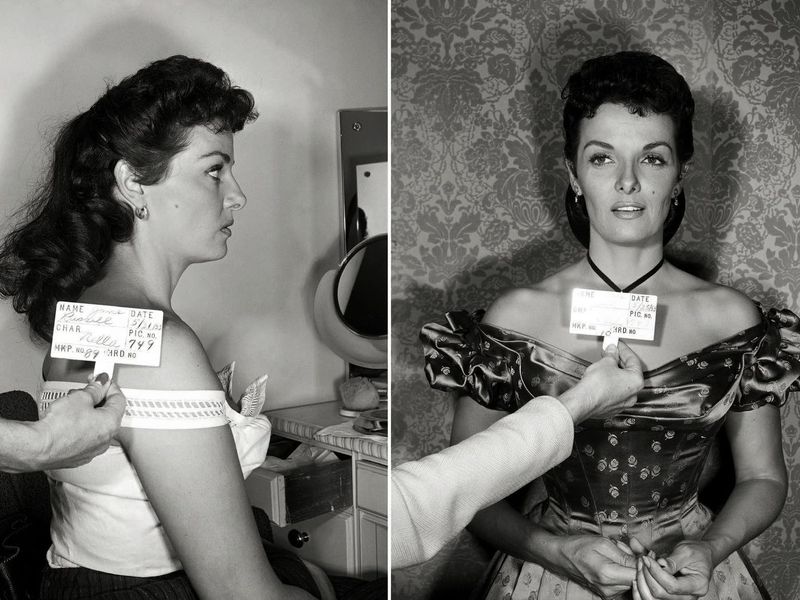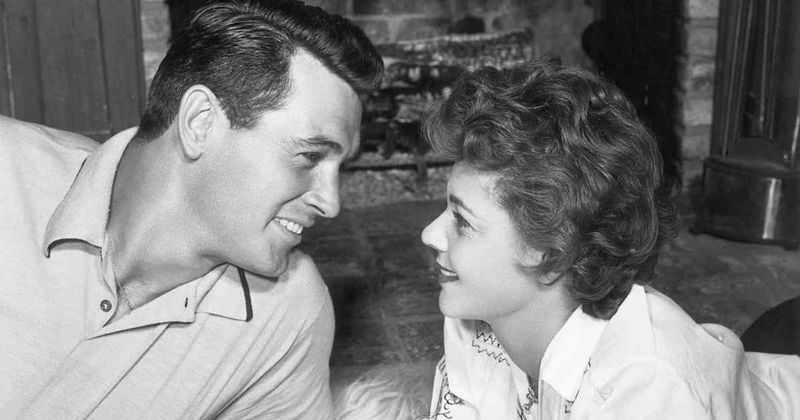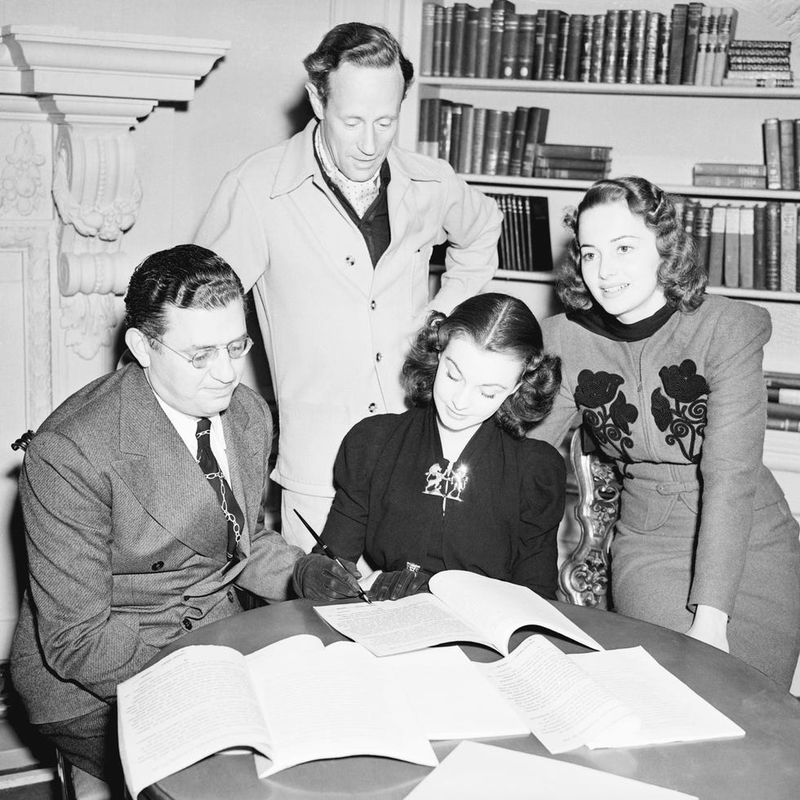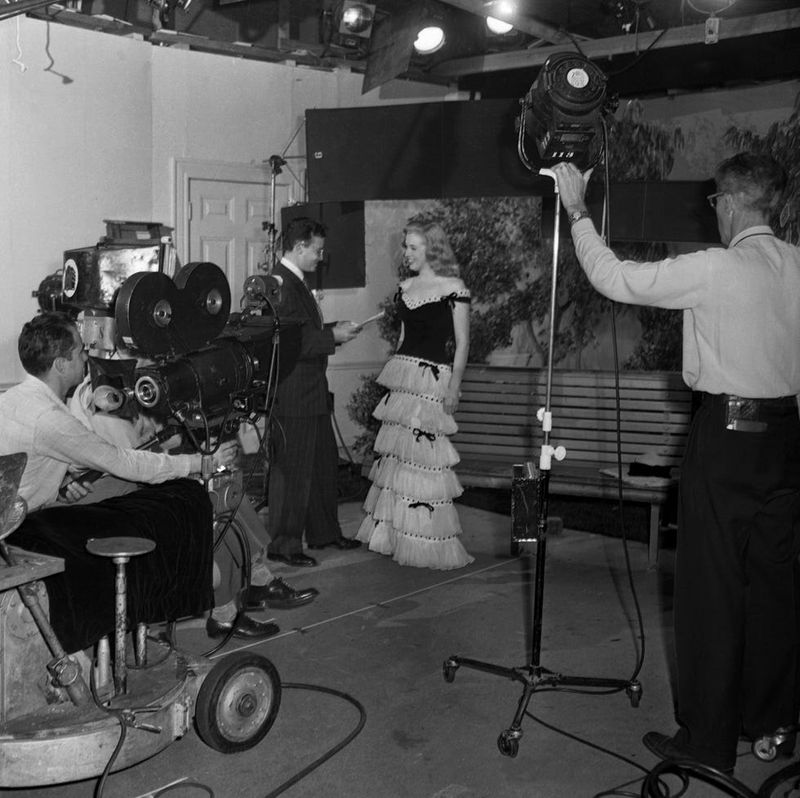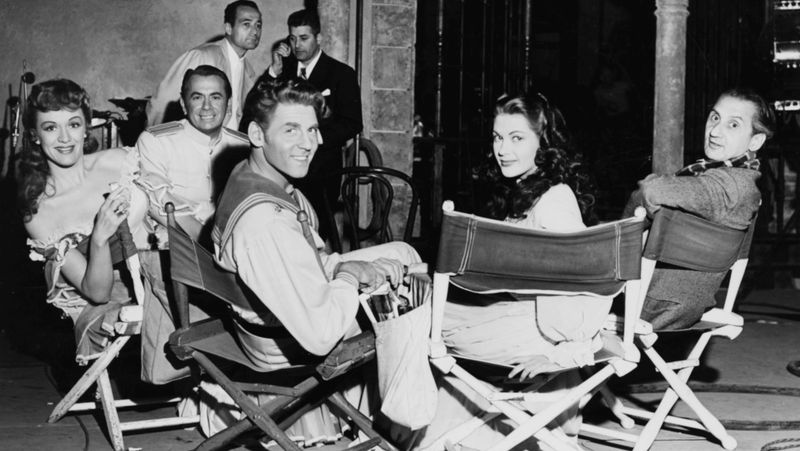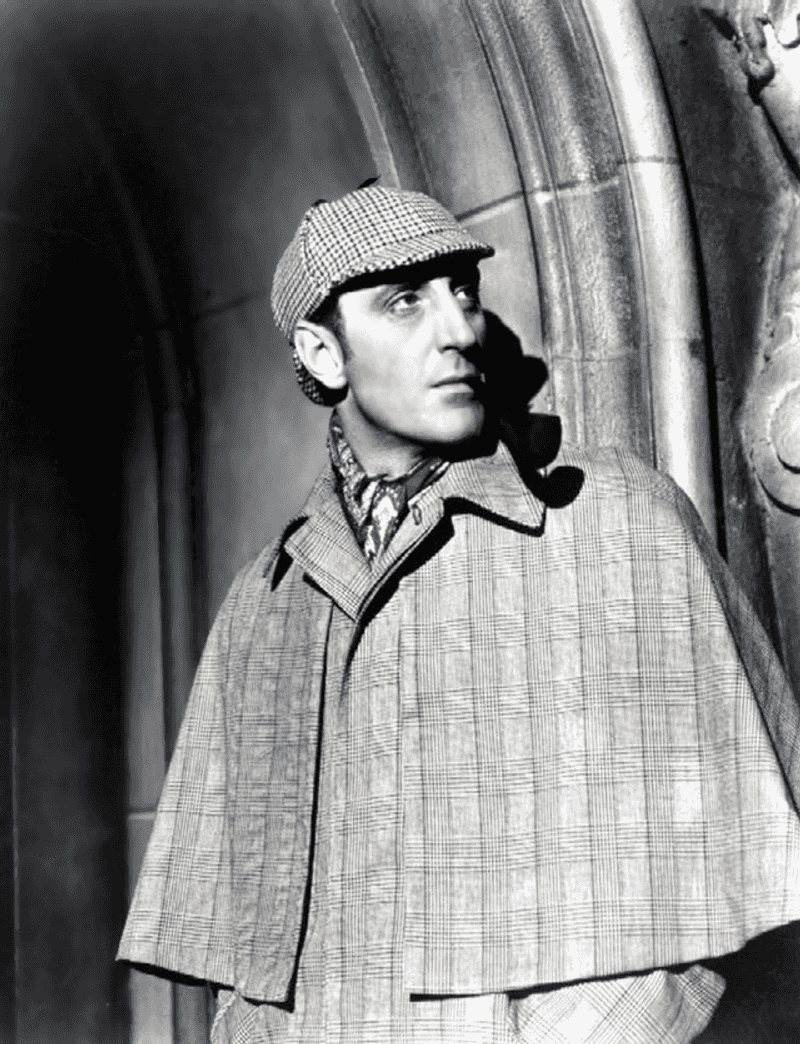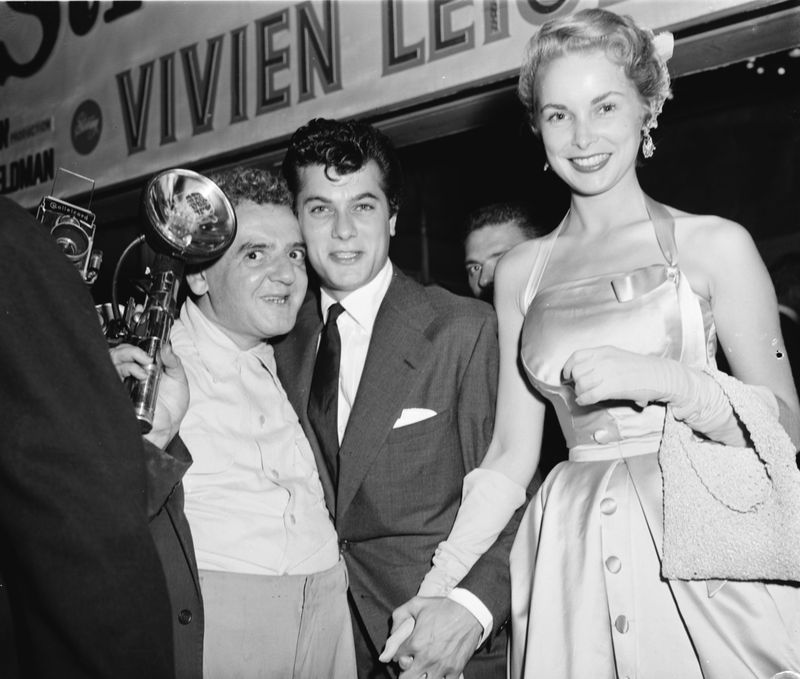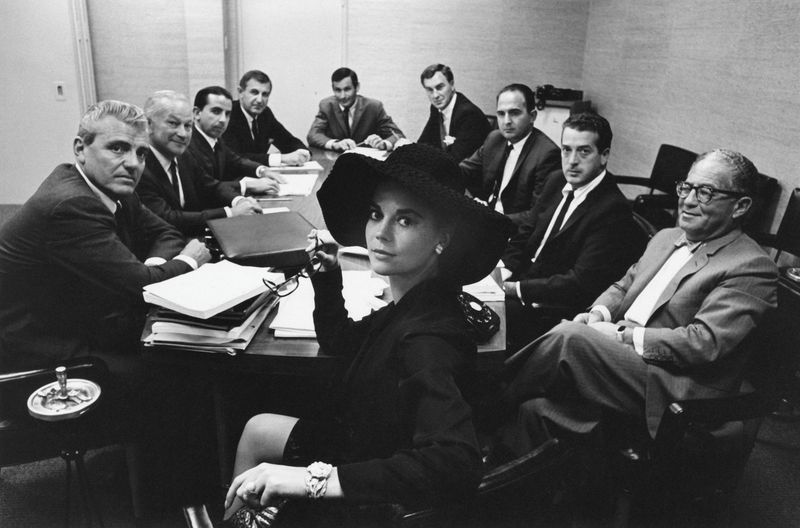The golden age of Hollywood, often seen as a glamorous era, was shrouded in strict rules and regulations that governed the lives of its stars. Studios wielded immense power over actors, dictating every aspect of their careers and personal lives.
These rules, though hidden behind the glitz and glamor, were pivotal in shaping the iconic images we associate with classic Hollywood today. Let’s explore ten of the most disturbing rules that actors were forced to follow.
1. Studio Contracts Controlled Everything
Studio contracts were a double-edged sword. On one hand, they offered actors a sense of security, but on the other, they were shackles. These contracts dictated every move the actor made, both on and off the screen. Studios had the final say in roles, scripts, and even the actor’s public demeanor. This control extended to personal lives, leaving little room for individuality or rebellion, binding them to the whims of studio executives.
2. No Public Scandals Allowed
In the golden age of Hollywood, maintaining a pristine image was paramount. Public scandals were not just frowned upon; they could end a career. Studios employed teams to manage and cover up any potential controversies. The pressure to remain scandal-free led many actors to live double lives, projecting perfect personas while hiding their true selves. The fear of exposure was constant, dictating every public interaction and decision.
3. Mandatory Makeovers
The transformation of actors was nothing short of extreme. Studios meticulously crafted stars, altering everything from names to appearances. Hair color, style, and even teeth were modified to fit the desired image. This process was not just physical; it was psychological. Actors had to embody these new personas, often losing touch with their authentic selves. The makeover was both a metamorphosis and an erasure of individual identity.
4. Dating Was Carefully Managed
Love in Hollywood was often more about publicity than passion. Studios orchestrated relationships to craft appealing narratives for fans and the media. Genuine romances were overshadowed by staged pairings, designed to boost careers and box office numbers. Behind the scenes, real feelings were hidden, leaving actors to navigate a complex web of true love and fabricated connections. Public appearances were scripted, with every move calculated for maximum effect.
5. Strict Morality Clauses
Morality clauses were weapons in the hands of studios, enforcing codes of conduct. Actors signed these clauses, agreeing to adhere to strict moral guidelines both professionally and personally. Violating these could lead to career destruction. This constant scrutiny dictated lifestyle choices, pressuring actors to conform to an idealized image. The line between public expectation and personal freedom was blurred, trapping actors in a moral maze.
6. No Improvisation on Set
Creativity on set was a controlled process. Improvisation was discouraged, with actors expected to deliver lines and actions exactly as written. Directors maintained rigid control over every scene, leaving little room for creative expression. This stifled spontaneity, transforming actors into mere vessels for the script. The rigidity extended beyond the set, shaping their approach to roles and limiting their artistic growth. Freedom was sacrificed for precision.
7. Limited Personal Freedom
Hollywood stardom came at the cost of personal liberty. Studios dictated where actors lived, who they associated with, and even what they wore. This all-encompassing control extended to speech, with actors coached on public conversations. The glamour of their lifestyle masked the reality of constant surveillance and control. Every aspect of life was monitored, ensuring that the studio’s image remained untarnished. The price of fame was freedom.
8. Typecasting Was Inevitable
Once an actor was cast in a specific type, breaking free was nearly impossible. Studios preferred familiarity over risk, typecasting actors in similar roles repeatedly. This limited their career scope, confining them to predictable paths. The struggle to redefine their image was constant, with few managing to escape the mold crafted by studios. The repetition stifled creativity, leaving many actors yearning for diverse opportunities and artistic freedom.
9. Required Public Appearances
The red carpet was both a stage and a cage. Public appearances were obligatory, crafted for publicity and image management. Actors attended events, premieres, and charity galas, often with scripted interactions and rehearsed smiles. The pressure to present a flawless image was relentless, overshadowing genuine emotions. These appearances were less about personal engagement and more about maintaining the studio’s crafted persona.
10. Image Management Teams
Behind every star was a team dedicated to crafting and controlling their image. Publicists, stylists, and studio “fixers” worked tirelessly to maintain a pristine public persona. This involved manipulating truths and crafting narratives that aligned with studio goals. The constant scrutiny and pressure to adhere to these manufactured images often left actors feeling disconnected from their true selves. Image management was both a support system and a form of control.
